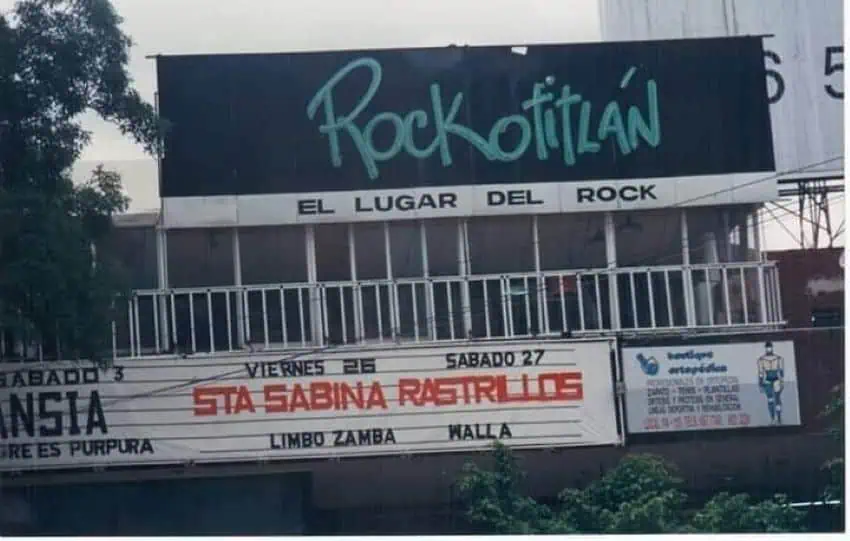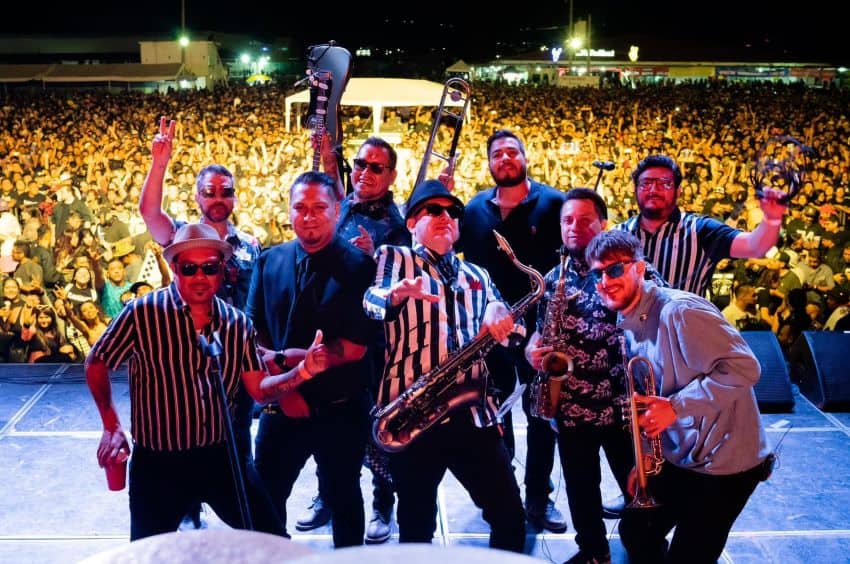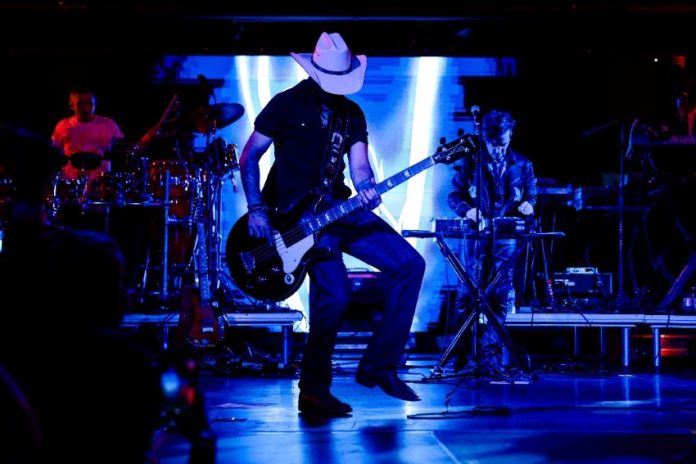Latin America has a rich history of producing its own rock music. Bands such as Argentina’s Soda Stereo and Babasónicos, Mexico’s Café Tacvba and Molotov, Chile’s Los Prisioneros, and Colombia’s Aterciopelados, rock bands have touched hearts and awakened social consciences across the continent. While genres like reggaeton, cumbia and Mexican regional music are popular today, 20th-century Latin rock is known for its politically critical and defiant nature, as it frequently exploded under dictatorships or authoritarian regimes.
Given Monterrey’s current conservative reputation, it may come as a surprise that the city was a hub for cutting-edge bands in the mid-1990s. Mexico City journalist Ricardo Bravo dubbed this musical movement La Avanzada Regia — the Monterrey Advance Party — highlighting the vibrant and innovative music scene that emerged during this period.

Born in Monterrey in 1994, I grew up immersed in this music, largely due to the influence of my father, who was in his mid-twenties at the time and remains an avid fan of these groups. Several factors contributed to these bands’ uniqueness: they created a thriving music scene in an unexpected location, their lyrics were both appreciative and critical of their surroundings and each band had a distinct and unique sound.
But who were these bands? What did they sing about, what allowed them to flourish, and why did the scene end?
The bands that led the charge
The Avanzada Regia’s iconic bands were composed of young men who, in their own words, never expected to be “discovered.” Addressing themes such as heartbreak, childhood memories, the Monterrey landscape, community pride and defiance of authority, their music has garnered significant fame in the Spanish-speaking world. Some of the movement’s most notable groups include:
- Control Machete: Inspired by Cypress Hill, this hip-hop band was arguably the movement’s most successful group. Their hit single “Sí Señor” was nominated for Best Rock Song at the 2000 Latin Grammys, and they even embarked on the joint tour “Molochete” with the world-renowned Molotov. My favorite track is “Andamos Armados,” about community and using words and music as tools for change.
- Zurdok: Known for their powerful, distorted guitar sound, Zurdok played a pivotal role in drawing attention to the Avanzada Regia as a whole. Lead singer, Chetes, has enjoyed a successful solo career. I recommend the song “Platique con mi pistola.”
- Inspector: With a blend of ska, reggae and rock, Inspector continues to perform energizing music you can’t help but jump to. Their song “Amnesia,” recorded with Café Tacvba and La Maldita Vecindad, truly encapsulates the musical spirit of the era.
- El Gran Silencio: My personal favorite, El Gran Silencio, combines norteño elements like accordion-heavy cumbia, vallenato, hip-hop, and rock. Their song “El Mitote” offers insight into Monterrey’s cultural life, while “Déjenme si estoy llorando” is personally significant personal significance for me as my father sang it to me when I was young. This band remains active.
- Kinky: Known for their sophisticated mix of electronic and rock music, Kinky’s beats are particularly impressive. If I were to recommend one song, it would be “Soun tha mi primer amor.” I also strongly advise you to listen to their Unplugged session.
- Plastilina Mosh: My favorite Avanzada group after El Gran Silencio, Plastilina Mosh makes exquisite music. If “delicious” could describe music, it would fit here. With catchy beats and provocative but ingenious lyrics, Plastilina can be downright addictive. Check out “P. Mosh” and “Peligroso Pop” to get a sense of their wide musical spectrum.
Many more bands were part of the Avanzada Regia, including Cabrito Vudú, La Verbena Popular, Jumbo, Flor de Lingo, Volován and — for emo enthusiasts — Pxndx.
But where did they come from? What contributed to the rise of Monterrey’s vibrant music scene? Why did it eventually wane? And did it really come to an end?
Building a music scene in ‘90s Monterrey
The rise of the Avanzada Regia happened for a few key reasons. Firstly, Zurdok acted as a sort of musical ambassador for the city. Then was the fact that were places available — both physical venues and traditional media platforms — where bands could perform and share their music. There was also a strong sense of creative freedom among musicians, allowing for experimentation and innovation. And, of course, there was the visible influence of U.S. music on their sound.
Zurdok’s big win at the 1995 Rockotitlán Battle of the Bands in Mexico City was a huge moment, putting Monterrey on the map in the music scene. This group made history as the first non-chilango band to win this competition, turning heads toward our mountain city.

Monterrey had happening spots like Café Iguana and La Tumba in the Barrio Antiguo neighborhood, where bands could jam out and get noticed. They also got airtime on late night TV shows like Desvelados, hosted by Juan Ramón Palacios, while radio stations like D99 and Planeta 104.5 FM played their music, helping them gain popularity without needing to be signed to a label. In this sense, the community and media’s support was fundamental to the bands getting recognized for their talent.
Jonás Gonzalez from Plastilina Mosh summed this phenomenon up nicely in a 2005 interview: they were just a group of kids making music for the love of it, not worrying about hitting it big. They never imagined getting picked up by big record labels, which gave them the freedom to take creative and lyrical risks.
Being close to the U.S.-Mexico border wasn’t just about geography. It influenced Monterrey rockers’ sound and even made it easier for them to get musical gear at a good price in Texas, just a quick drive away from town.
The members of these bands had the right talent, at the right place and time. They were lucky and landed in fertile soil. What happened next?
How did the Avanzada Regia come to an end?
Tony Hernández of El Gran Silencio makes a compelling argument in a 2019 documentary, asserting that La Avanzada Regia persists. “El Gran Silencio, Inspector, Kinky, Chetes and over 15 other bands from that era are still active,” he says.
In the early 2000s, the musical landscape shifted significantly due to technological changes and the local sociopolitical context. Firstly, there was a diversification in how people consumed music, moving beyond traditional platforms like TV and radio. Secondly, Barrio Antiguo, once a buzzing neighborhood for music in Monterrey, fell victim to the city’s severe insecurity crisis at the time. This meant that musicians in town were deprived of crucial spaces to showcase their talent and grow.
Of course, the market dynamics have shifted as well. Rock and hip-hop, particularly in the Avanzada Regia style, have become more niche, while the mainstream audience gravitates towards genres like reggaeton, Mexican regional music, and pop.

Lessons and legacy of the Avanzada Regia
For me, remembering the Avanzada isn’t just about showcasing Monterrey’s uniqueness or extraordinary talent: it’s a testament to the power of community in nurturing young talent. Thanks to a supportive environment, many of these bands, formed by teenagers and college students, have carved out a name for themselves across the Spanish-speaking world.
What unfolded in Monterrey, where these aspiring musicians never imagined gaining recognition, should serve as a blueprint for other communities nurturing budding talent.
As someone profoundly influenced by these rock icons, I picked up the electric guitar at the age of 14. It’s incredible, and fills me with pride, to think that perhaps my journey is intertwined with the spirit of La Avanzada Regia, especially considering that Monterrey’s most prominent emerging band, The Warning, is made up of three sisters from my generation of regias: Daniela, Paulina and Alejandra Villareal.
If La Avanzada has opened doors for local youth and gifted us with its remarkable music, then it has undoubtedly been a worthwhile endeavor. The music industry should take some of the movement’s wisdom and apply its invaluable lessons; and so should you, when you’re searching for something new to listen to beyond the Mexico City musical bubble.
Ceci is a lawyer who grew up in Monterrey and has lived in Mexico City since 2013. She is passionate about the Mexican culinary and music scene, taking great pride in her country’s cultural contributions to the world.
